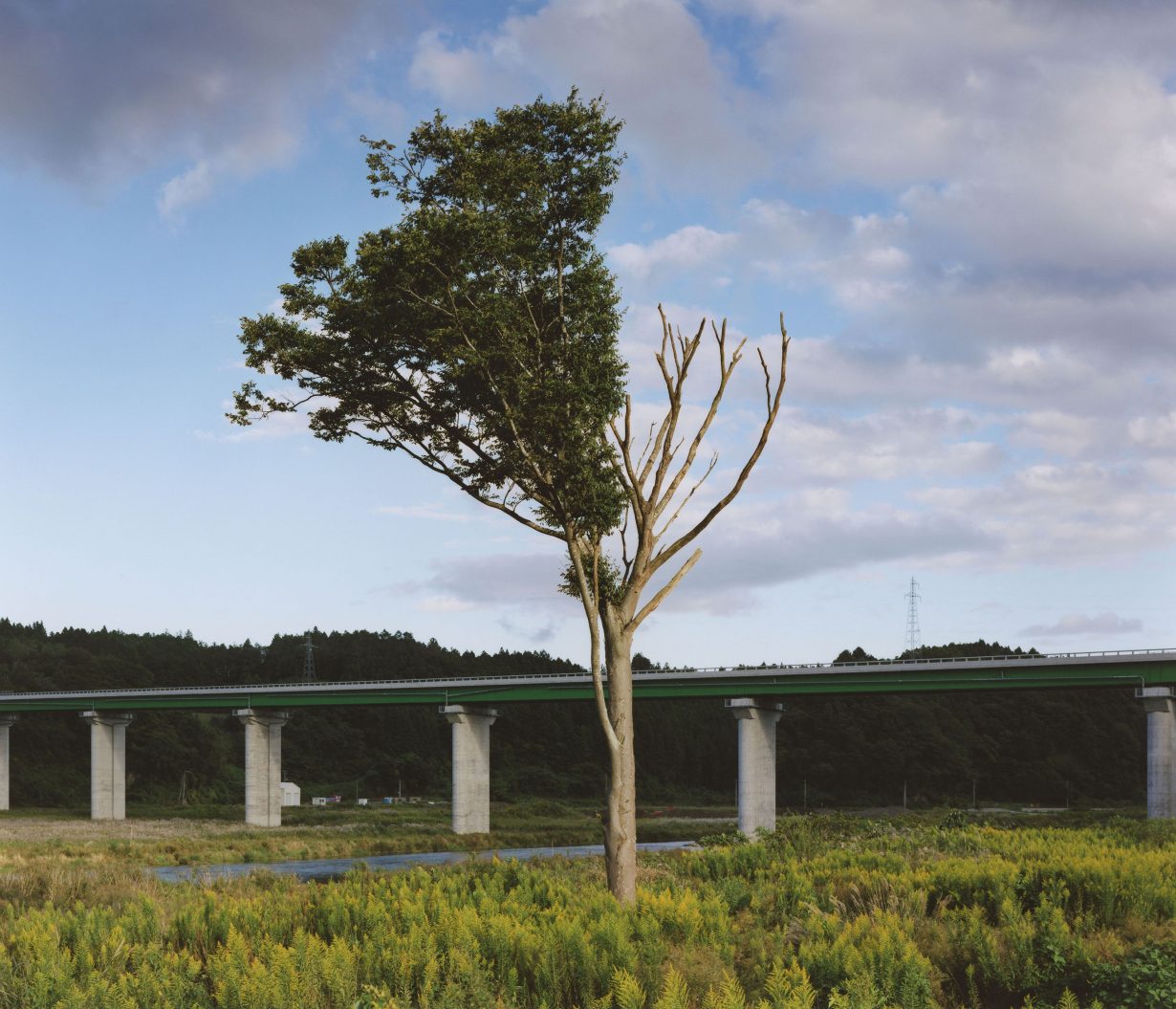The artist’s Tsunami Trees recounts everything he lost in the 2011 Tohoku earthquake and tsunami, reckoning with irreversible change
A lone, ancient tree displaying only half of its leaves stands eerily over a green riverbank. Life was seized from its branches several years before the photo was taken, when a devastating tsunami brought the land surrounding it to zero. Part of a series titled Tsunami Trees, the image is quietly beguiling, with the solitary plant seeming as if it might hold some kind of secret – some memory of a land and time now erased.
Naoya Hatakeyama lost his home, as well as his mother, in the 2011 Tohoku earthquake and tsunami, which was triggered on 11 March. The anniversary of the most devastating natural disaster in the country’s immediate history looms large over the public imagination, and the consequences of this calamity continue to remain plainly visible along the coastal areas – locations that appear in Tsunami Trees – most affected. The ten pictures exhibited from the series are rendered in large format, allowing the viewer to immerse themselves within each scene. Most of the pictures focus on a single tree, each characterised by irregular dead branches. The postdisaster image has a tendency to fit either within a narrative of grief, photos that document the pure loss of the landscape, or of human resilience, photos that show how, with our unified effort, we can overcome – or at least rebuild – what was lost. It seems significant that Tsunami Trees does not fit either of these narratives. The settings and conditions selected by Hatakeyama are decidedly tranquil. We are not forced to reckon with the changes in the landscape, but given a single point to consider. In these settings, the trees seem so improbable, so removed from reality, and yet somehow they stand, as sturdy and simple as any other tree you’ve seen before.

This is not to say the photos are without tragedy. The last two images show a single group of bare trees subsumed by a body of water, all but three fallen over and ready to be carried away. There is something deeply upsetting about their expendability. A gallery handout frames this disconnect simply: ‘at times the trees are revered as a steadfast presence, and at other times they are inconsiderately cut down and used’. A line can be traced from Tsunami Trees to Hatakeyama’s previous works such as Quarry (1986–91), which documents the lime hills of Japan, and Blast (1995–2010), a series of controlled explosions triggered as part of the industrial mining of lime, to his city photography, such as the River series (1993–94), which finds lime recast in the huge concrete walls surrounding the low rivers of Tokyo. Where these previous works found conclusion in the transformation of material and established a sort of order by mapping the human-landscape interface, the uncertain fate of the Tsunami Trees leave us with the feeling of something unpunctuated, something unknowable. Perhaps this is the nature of disaster.
The final wall of the exhibition houses a related series of photos titled Kochi, taken between 2021 and 2022, which captures temporary tsunami-evacuation towers recently built around the coast of Kochi prefecture. The environments in Kochi exude a similar serenity to the Tsunami Trees, although an explicit, imminent danger is signalled through these built constructions that alludes to the potential loss of the landscape at some point in the future. Multiple shots of each tower give a sense of perspective in relation to their respective settings. Locals have been warned that the Nankai megathrust earthquake anticipated to hit Kochi within the next 30 years will create a wave 34-metres tall. The consequences are inevitable and the Japanese government has persisted in giving public warnings about an earthquake that could devastate the country. And yet, as though nothing else could be more natural, as if dismissing a bad dream, people – and trees – remain.
Tsunami Trees at Taka Ishii Gallery, Tokyo, 31 August – 28 September
From the Winter 2024 issue of ArtReview Asia – get your copy.
